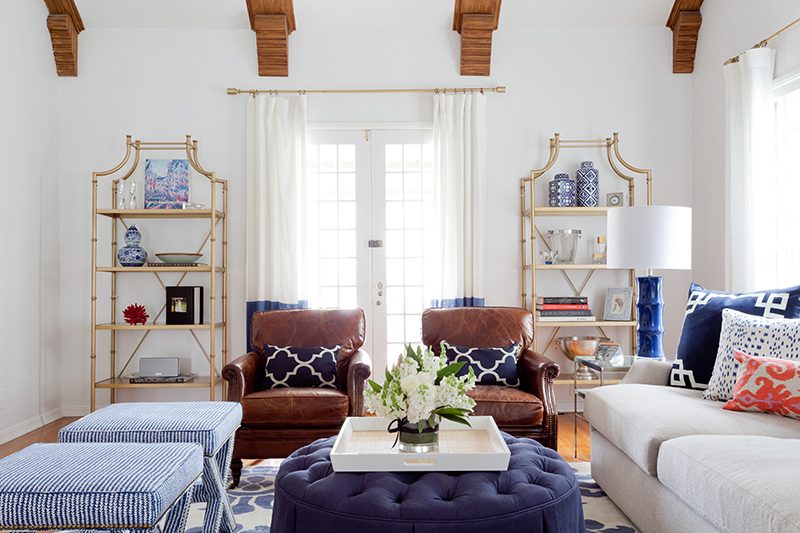What Is Symmetrical Balance in Interior Design
We talked about the transformative power of interior design when you use the principles of color, balance, scale and proportion, and rhythm and repetition in your interior design journey. Today, we'll discuss how Havenly designer Lauren Cox creates balance in a space.
Balance is the idea that when you walk into a room, everything has its place–it's the visual calmness in a room. There are two ways to achieve balance: symmetry and asymmetry.
Symmetry is the idea of having a mirror image, and it's a great tool to create visual pairs. Bedrooms, for example, lend themselves to symmetry, as the bed is commonly placed in the middle of the room with night stands on either side.
Asymmetry can be a bit trickier to master, but asymmetrical layouts allow you to be more creative. Asymmetry is the idea of creating balance with items that are different while maintaining cohesion. Use items that share some similarities such as being the same color or the same height. Test your asymmetrical design skills, by curating a gallery wall. This way, you can easily swap out framed prints and photos if something doesn't look right on the first try. You'll want to choose artwork that has something in common such as color palette and vary the size and frames of each piece.
While you may prefer one over the other, balance is informed by the floor plan and architectural features of the room. For example, a fireplace almost always has two same-sized walls on either side which opens up the perfect opportunity for symmetry in the design. In a living room, you'll often see two of the same chairs opposite of the sofa which creates an asymmetrical appearance to the room, or you can put two of the same sofas opposite each other for a symmetrical design.
Like color, balance shows itself in different ways depending on the style you are drawn to.
Traditional + Classic + Farmhouse

In classic, traditional, and farmhouse styles there tends to be more symmetry seen in those designs.
Eclectic + Modern + Bohemian

If you identify as stylistically eclectic, modern, or bohemian, your design will incorporate more asymmetry.
Transitional

Transitional styles, like mid-century modern, utilize both symmetry and asymmetry, so your, personal preference determines the layout.
There are a couple of things Lauren emphasizes when thinking about balance.
Too Much Symmetry
If a room has too much symmetry, it can feel very flat and predictable. If you find that everything in a room has a pair, shake things up by introducing a different color or pattern to a pair. Rearranging your furniture is another way to break up symmetry.
Too Much Asymmetry
On the other end of the spectrum, too much asymmetry can make a room feel unsettled or chaotic. While it can be tough to identify, try to look for areas that feel messy, and bring a sense of balance to them by creating some sort of mirrored-effect.
If you haven't already, suss out your personal preferences by looking at photos of rooms you like. Are they symmetrical or asymmetrical? Then, look at your space and determine if it lends itself to one or the other. Note architectural features–doors, window placement, and focal points, like a fireplace. Are they centered along a wall? Also notice how the space flows into other rooms because you want the transition from room to room to feel balanced rather than abrupt and jarring. Finally, look at the pieces you want to use. How will they fit in the space?
Now that you have considered the impact of color and balance on a room, we'll discuss the role of scale and proportion. If you've enjoyed the past few blog posts and want even more examples and design tips, Lauren describes each of the principles of interior design in her free Skillshare class.
What Is Symmetrical Balance in Interior Design
Source: https://havenly.com/blog/balance-in-interior-design
0 Response to "What Is Symmetrical Balance in Interior Design"
Post a Comment